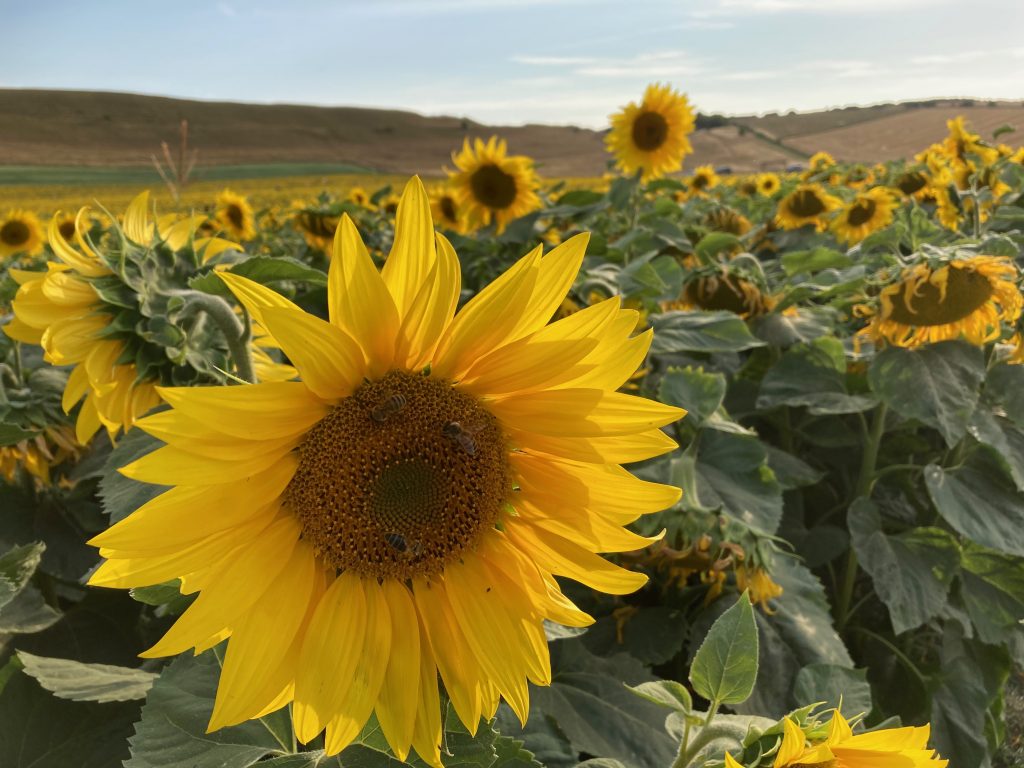
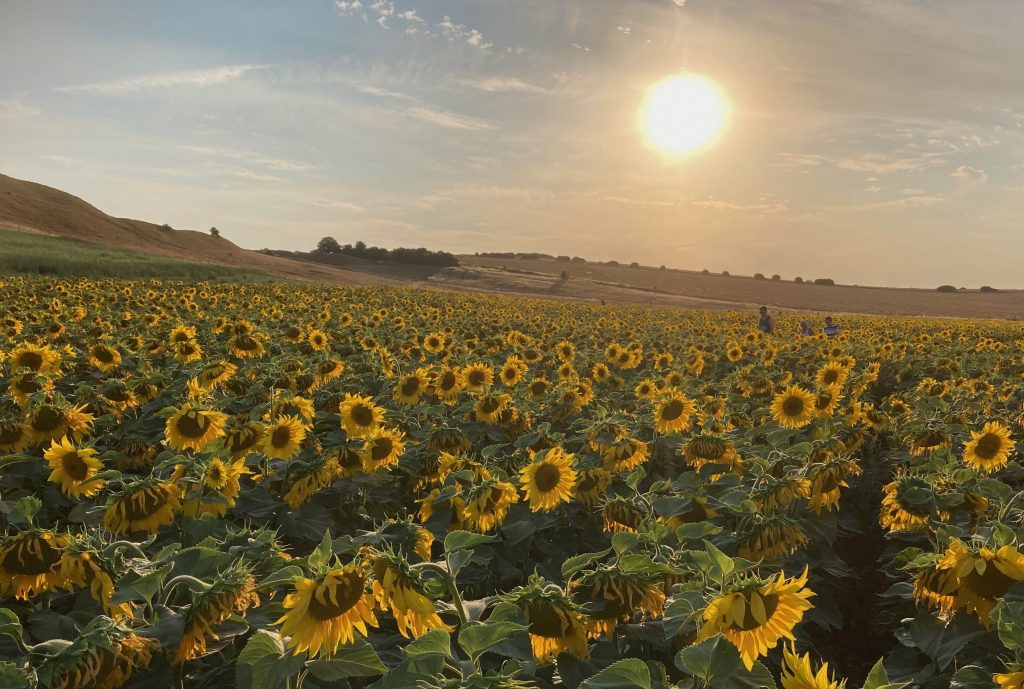
The Dorset Sunflower Trail at Maiden Castle Farm just outside Dorchester, has been a huge success, the field was neatly located directly below Maiden Castle, and had a strip of linseed planted next to it to replicate the Ukrainian flag, though sadly flowering time didn’t allow the blue and yellow to appear at the same time. This is the second year that the Hoskin family have run the Trail, raising substantial funds for Dorchester hospital, and for a Ukrainian hospital. The sunflower field had a wonderful festival feel to it when we visited on a Saturday evening during the last heatwave, thankfully it was cooling down by then, there was a tea and cake trailer, a barbecue was getting going, a gin bar in another trailer was just opening up, there was a busker playing cooling music on his guitar, and the sunflowers under the setting sun looked fantastic. There were bees on nearly every flower, and a steady flow of visitors wandered through the trails in the field, soaking up the atmosphere. There were informative notices about farming, sunflowers, the local area and the area of Ukraine they were supporting, stationed at intervals along the trail. What a great way to engage the public on farm, a very positive event, and full marks to the Hoskins, the whole family were involved on stalls, or cutting stems to sell, and everyone headed home happy, if a little dusty.
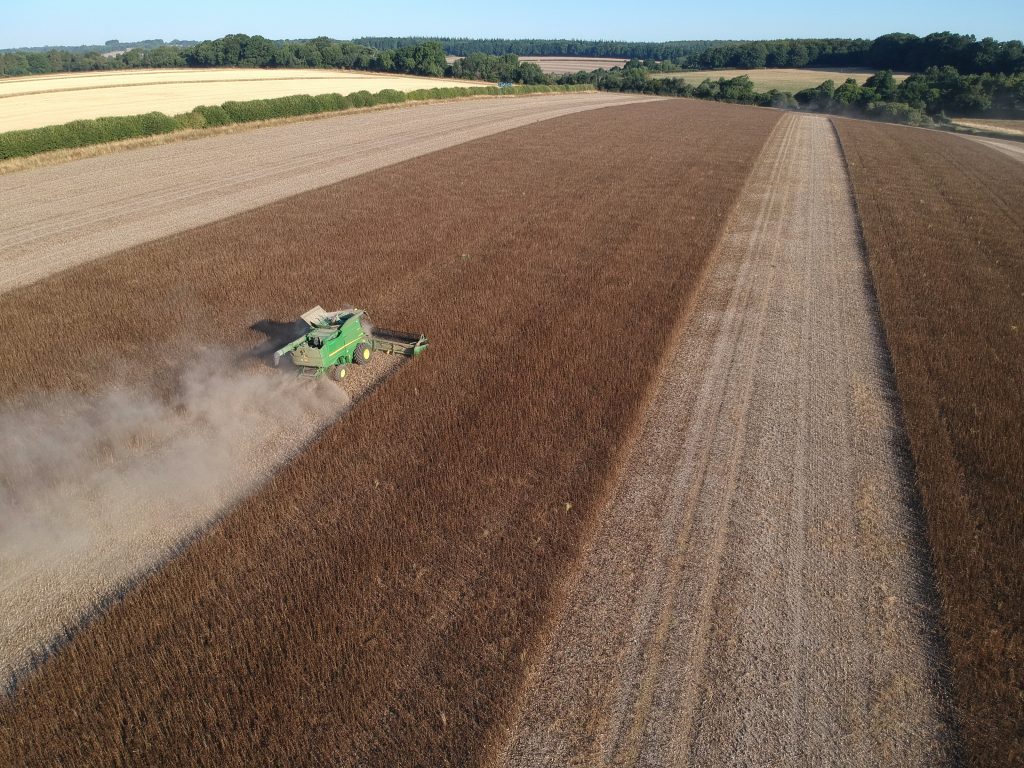
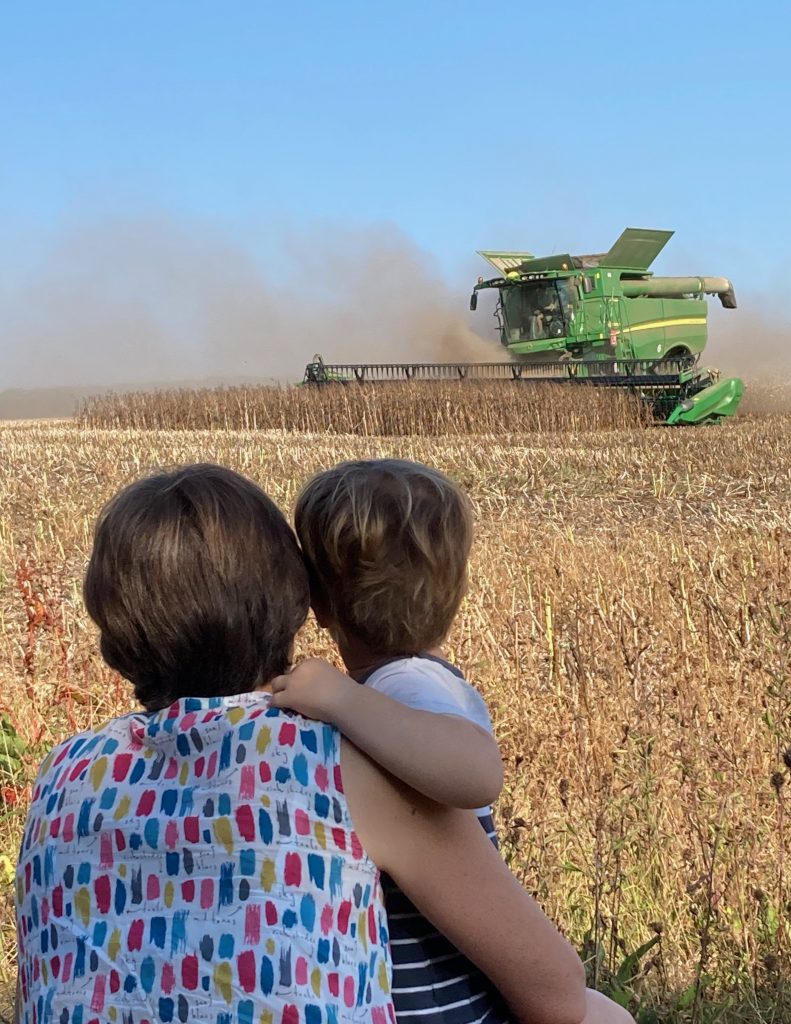
Harvest here at home was all but completed on August 12th, the spring beans were so brittle in the hot weather that we had to cut them through the night and into the early morning. Sadly they did not perform well, near enough half of last year’s record yield, beans really do need moisture at some point in the season, which has notably failed to materialise this year. After what looks like the driest July and August on record we are crying out for rain now so we can get on and sow some rape and cover crops. It’s too risky to sow right now where the seeds might germinate in damp surface soil from the odd scud we get, but then expire without proper rain to keep them going. Being a bit of a rainfall nerd, it is always fun to dig into the records and manufacture some interesting stats, the April-July growing season is important for anyone who grows crops in the ground, and this year’s 118mm in that period is the lowest we have seen here since records began in 1985, the average is 251mm, and the highest was 10 years ago in 2012, at 634mm, who can forget that summer? Even with only 118mm, it is remarkable how well our winter crops performed, and neighbours tell me their spring crops did surprisingly well too. Grass farmers are not very happy, some having been feeding precious winter fodder for many weeks. There’s a particular part of Essex where farmers dream of 118mm in a summer, they will be telling us we really shouldn’t complain.
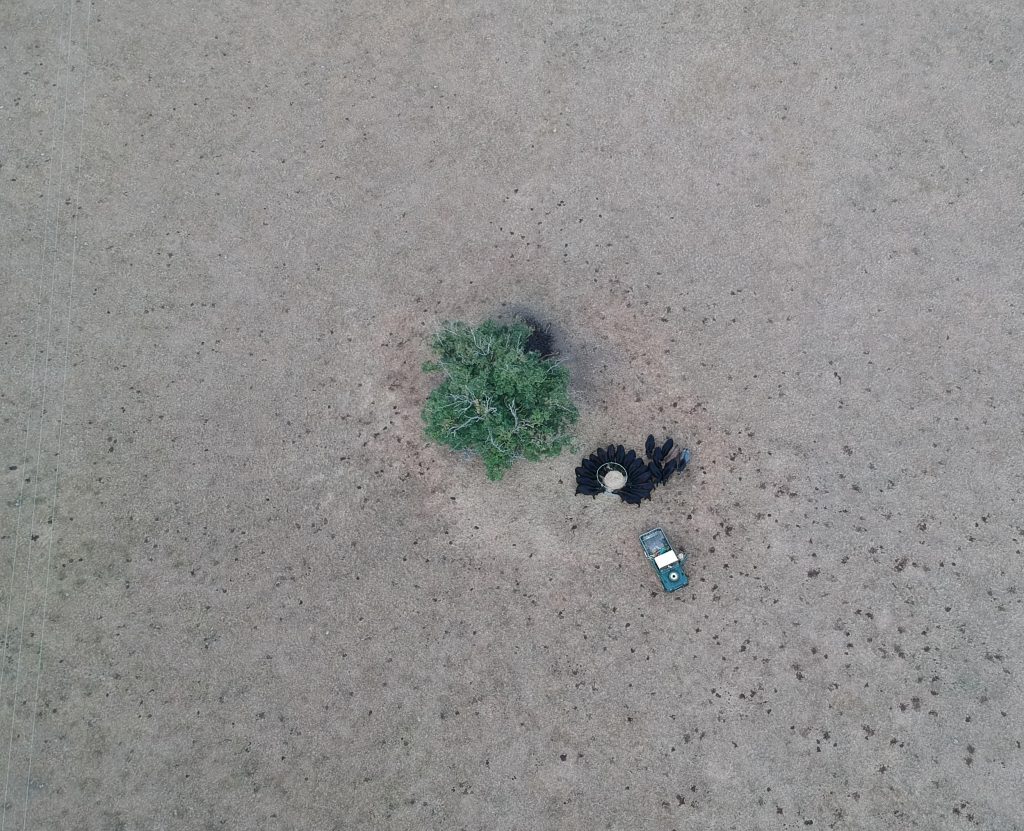
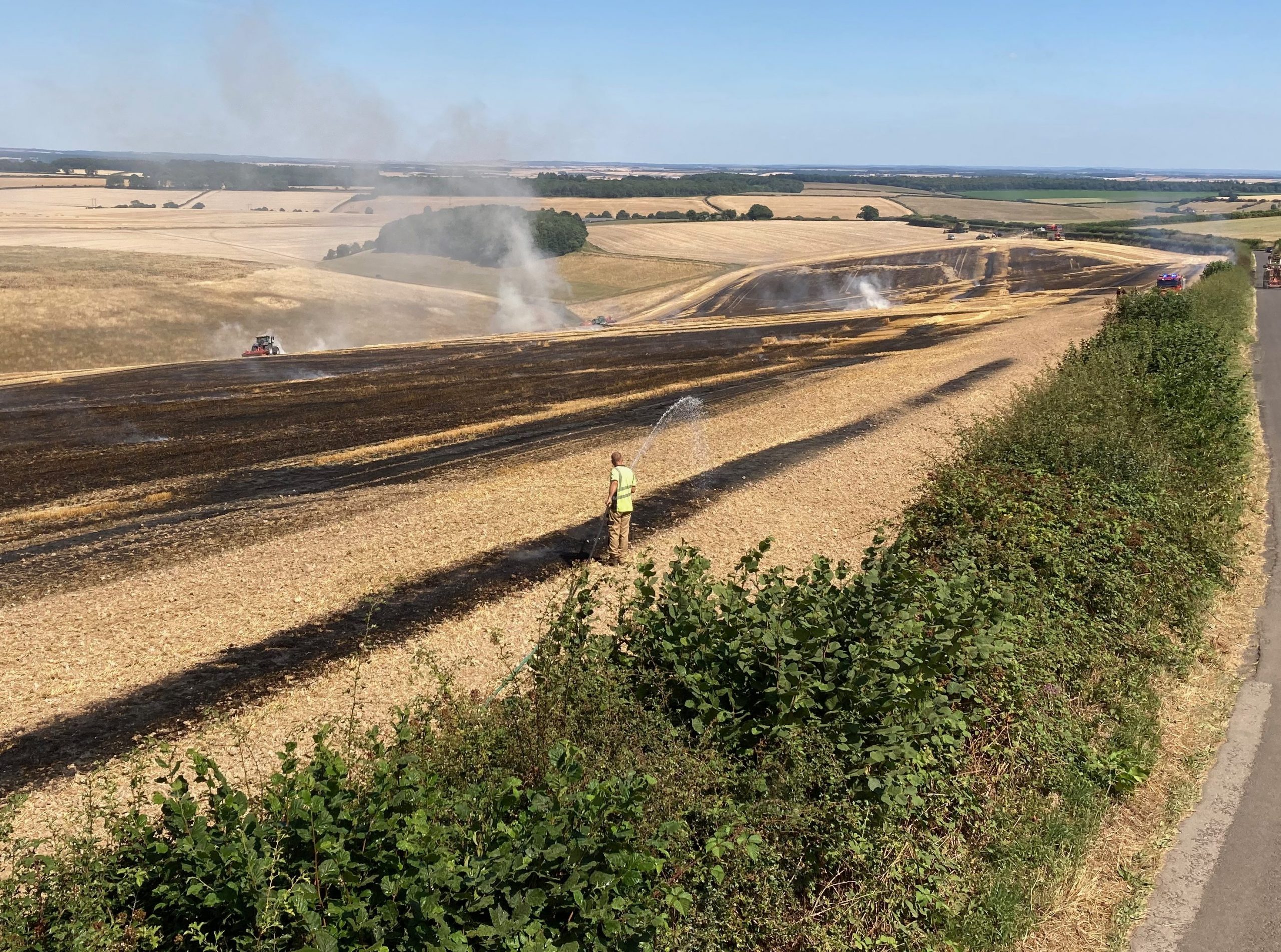
An all too common feature of the recent scorching weather has been the scary regularity of smoke appearing from over the hill. Fortunately thanks to the forethought of our Blandford NFU branch Chairman Mark Tory, swift action confined the fire shown here to around 20 acres, when it could so easily have been 200 or even 2000. At the start of harvest Mark set up a whatsapp group of local farmers for just this purpose, and on this fateful day many of us were able to react quickly with cultivators and bowsers, supporting the fire brigade who also turned out in force with 8 appliances. 100 metres of hedge and a modest area of standing wheat was lost, but a great deal of straw and bales were saved. The Fire Brigade across Dorset have performed fantastically well through this very difficult time, multiple call outs on some days meant they were under huge pressure.
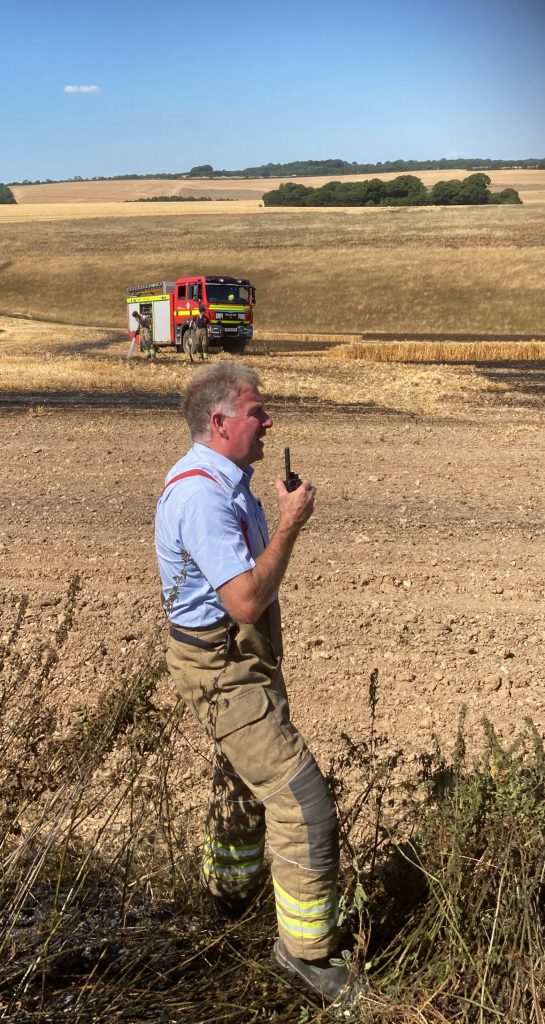
A little farm politics at the Gillingham and Shaftesbury show
The early finish to harvest allowed an enjoyable day trip to the Gillingham and Shaftesbury show, its date in mid-August usually means we only get to attend if it’s raining. The NFU stand was busy with Deputy President Tom Bradshaw flying the flag and listening carefully to news of the matters most important to Dorset Farmers. Top of the list being the ongoing Poole Harbour nitrate issue, where the Environment Agency needs to work a lot harder to properly engage with farmers if we are to achieve what we all agree is desirable in a healthier Poole harbour. A close second is the TB cull situation; all of us involved in this tricky topic are very unhappy with how this vital tool has been removed from our list of options before there is anything else realistic available to enable us to continue fighting the TB problem. Whether you support it, oppose it or remain agnostic, there is no doubting the scientific evidence which shows that during the 5 or 6 years of culling in different areas of Dorset (and other counties), huge reductions have been achieved in the numbers of cattle herds under restrictions due to TB infection. This has come about from a formerly supportive government, (the coalition one) in the face of huge perceived public disapproval, that enabled farmers and landowners to work together closely to achieve a single and very important outcome. Will a change of face in Downing Street lead to any change on current policy, which was largely dictated to the last prime minister after hours, or will it be bottled?
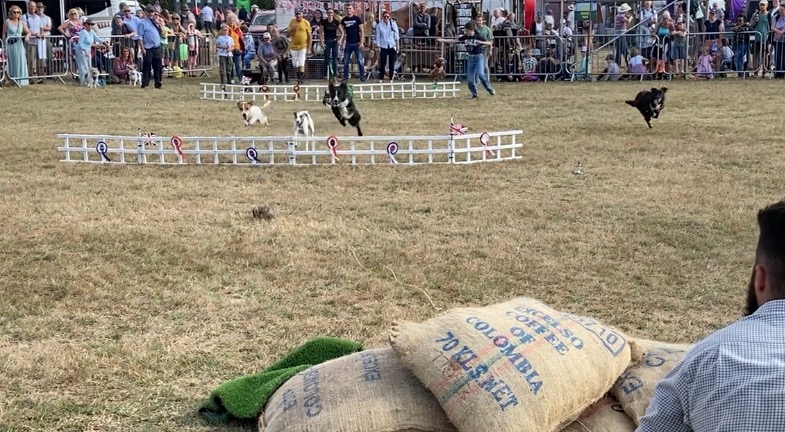
On a much lighter note, a wander around the show site brought us first to the Food and Farming educational area, where many parents and children were engaged with wide ranging and well-presented exhibits. Onwards then to the countryside area, where we happened upon Harold Galpin’s terrier racing show. Always a hoot, Harold’s dry delivery and flowery commentary on the dogs that people bring to the ring for the races, never fails to entertain. Something always goes wrong, the dogs run amok, the fences fall over, the string breaks that winds in the lure, but it is all great fun to watch.
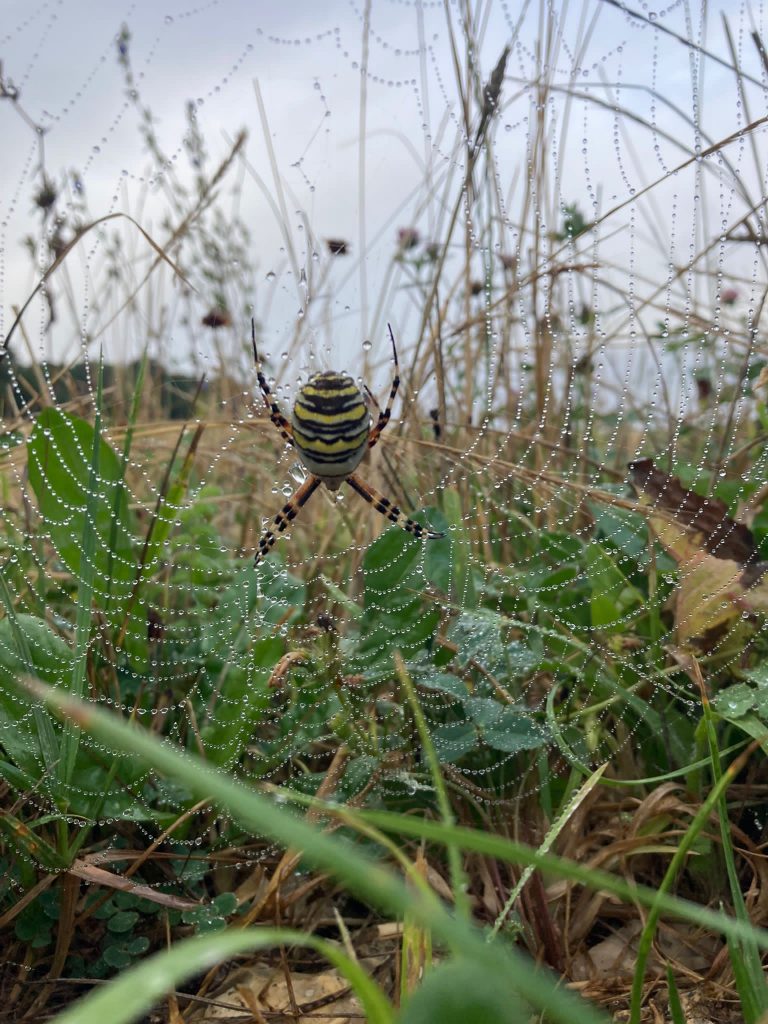
Fred caught a great picture of a very striking Wasp Spider a few days ago on a dewy morning, the dew shows up the web so well, amongst the diverse plant mix in one of our herbal leys. To quote the Wildlife Trusts’ website: The wasp spider is a very large, colourful spider that is a recent arrival in the UK from the continent and has slowly spread over the south of England. It builds large orb webs in grassland and heathland, and attaches its silk egg-sacs to the grasses. The web has a wide, white zig-zag strip running down the middle, known as a ‘stabilimentum’, the function of which is unclear.
Mating is a dangerous game for the males; they wait at the edge of the web until the female has moulted into a mature form, then take advantage of her jaws being soft and rush in to mate. However, many males still get eaten during this time. Life can be hazardous……..
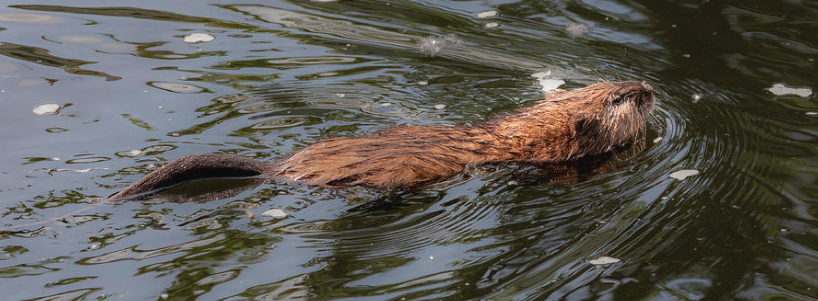
Interesting to hear this week from a fencing contractor who has been working on Beaver enclosures within Dorset. One on private land in North Dorset, and others on Dorset Wildlife Trust and RSPB land in west Dorset and on the Isle of Purbeck. It has become very fashionable in environmental circles to celebrate the beaver as the greatest thing since sliced bread, however its re-introduction at an alarming speed across the country is causing concern amongst some farmers and land-owners who fear it will flood their land and damage valuable trees. The government has not helped calm the waters by suddenly announcing protected status for beavers just before parliament rose for the summer, with no mention of a previously promised management protocol which would enable trouble to be avoided when the animals stray into sensitive areas. This has been extremely unhelpful, it has stoked the fires of beaver angst, and creates dispute where none is needed. Beavers became extinct in the UK around 400 years ago, after years of being hunted for their pelts, and scent glands for some weird reason. Many acknowledge the beaver to be a clever architect of valuable wetland habitat and flood risk reduction, there is much evidence of this in other countries, but many others fear what it can do with its large teeth, powerful jaw and dam building tendency. For anyone who would like to learn more about what positive influence beavers can bring to our landscape, I recommend the book Cornerstones, by Benedict Macdonald, which as well as beavers, describes several other species the author considers to be cornerstones of the natural world. After hearing him speak at Groundswell I bought his book, am now enjoying it hugely, and learning a great deal.

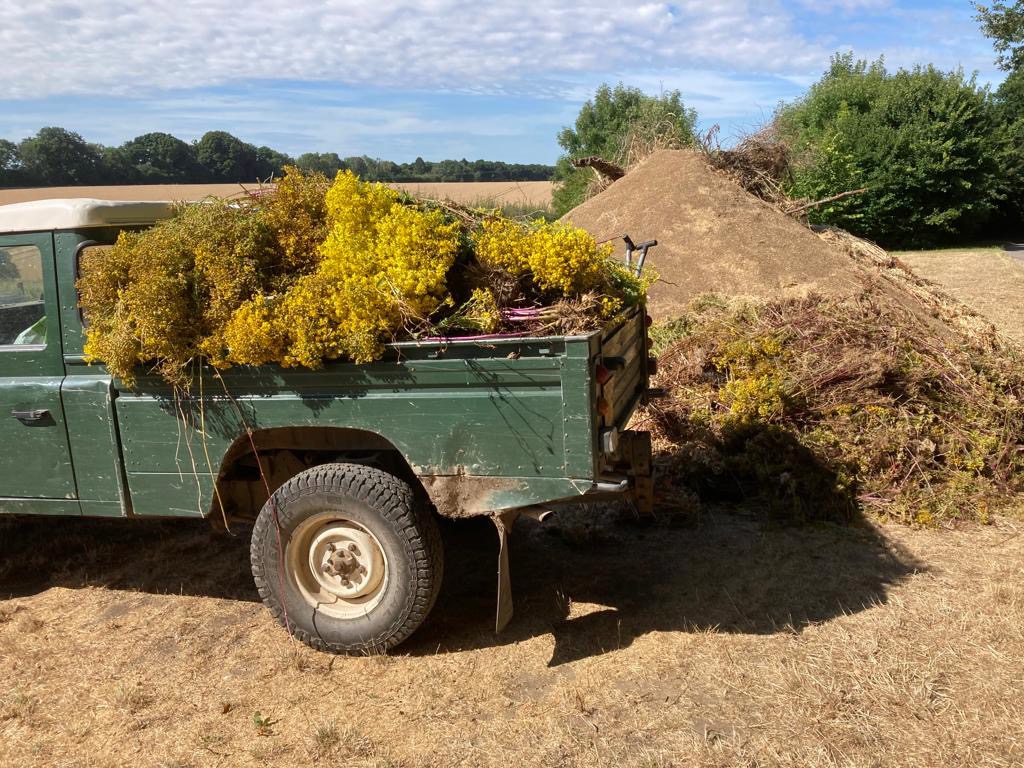
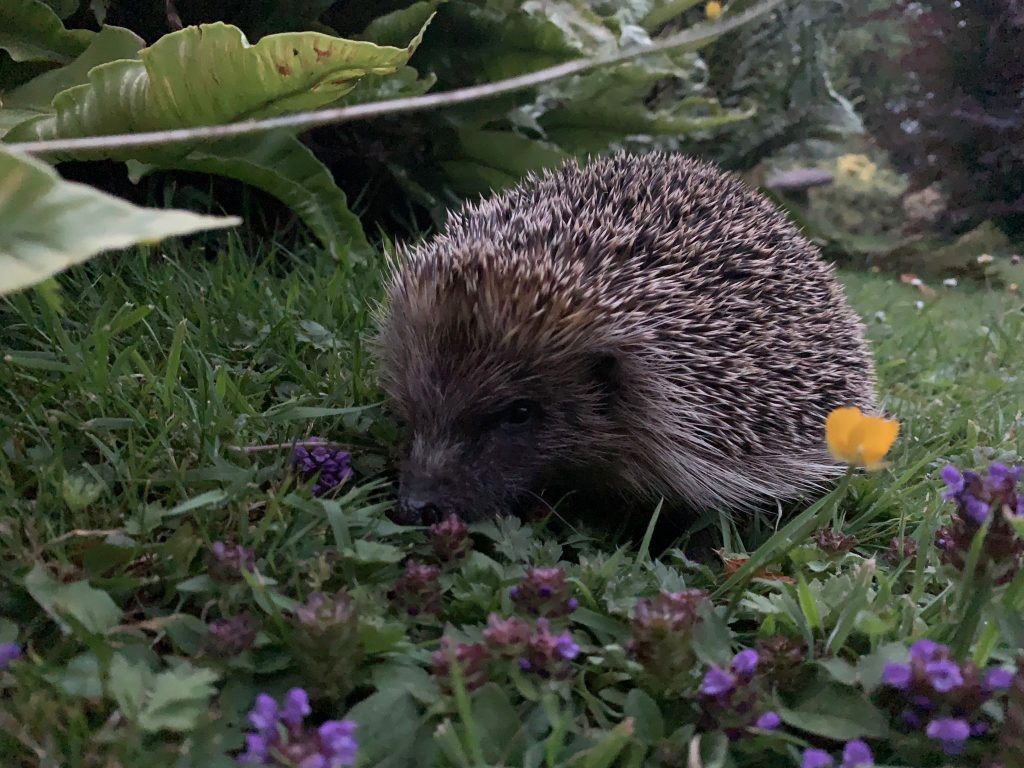
STOP PRESS – HARVEST FINISHED TODAY 26TH AUGUST
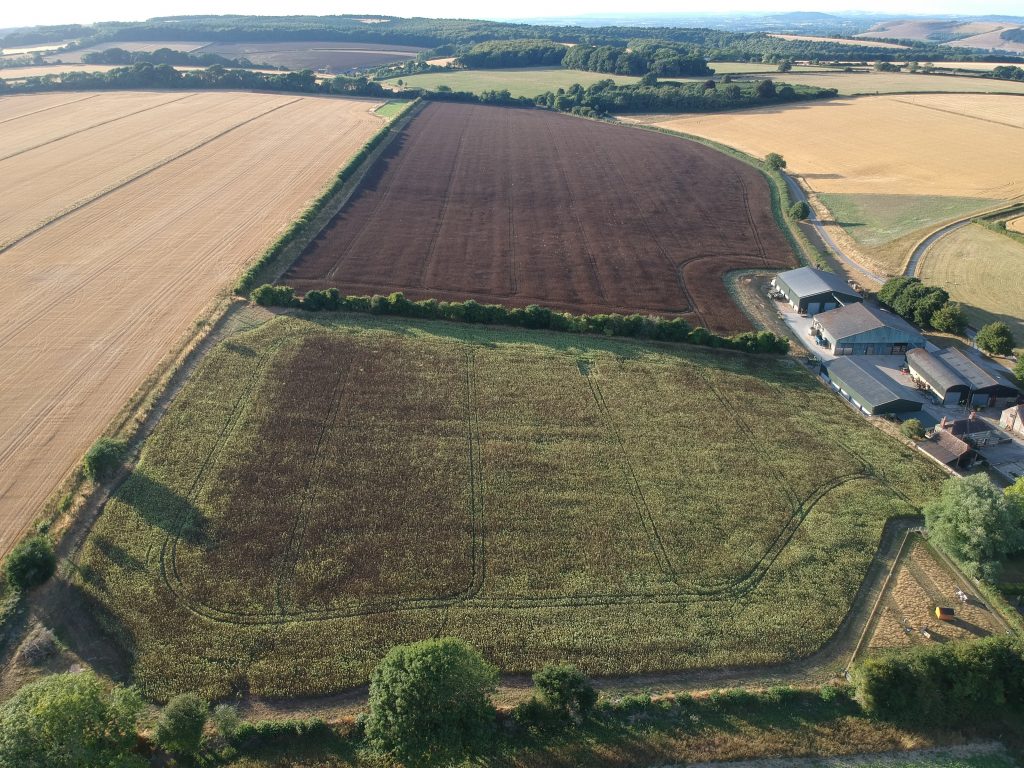
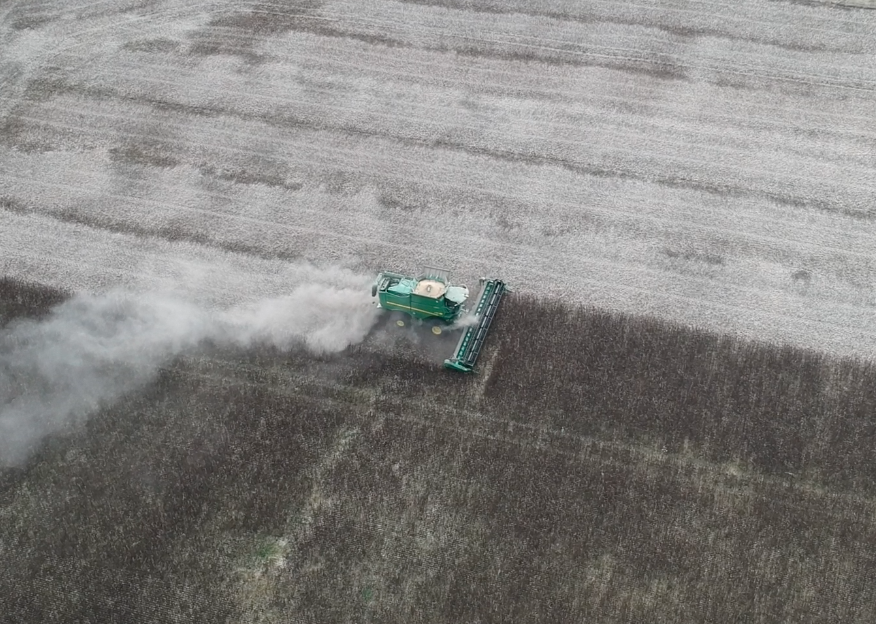
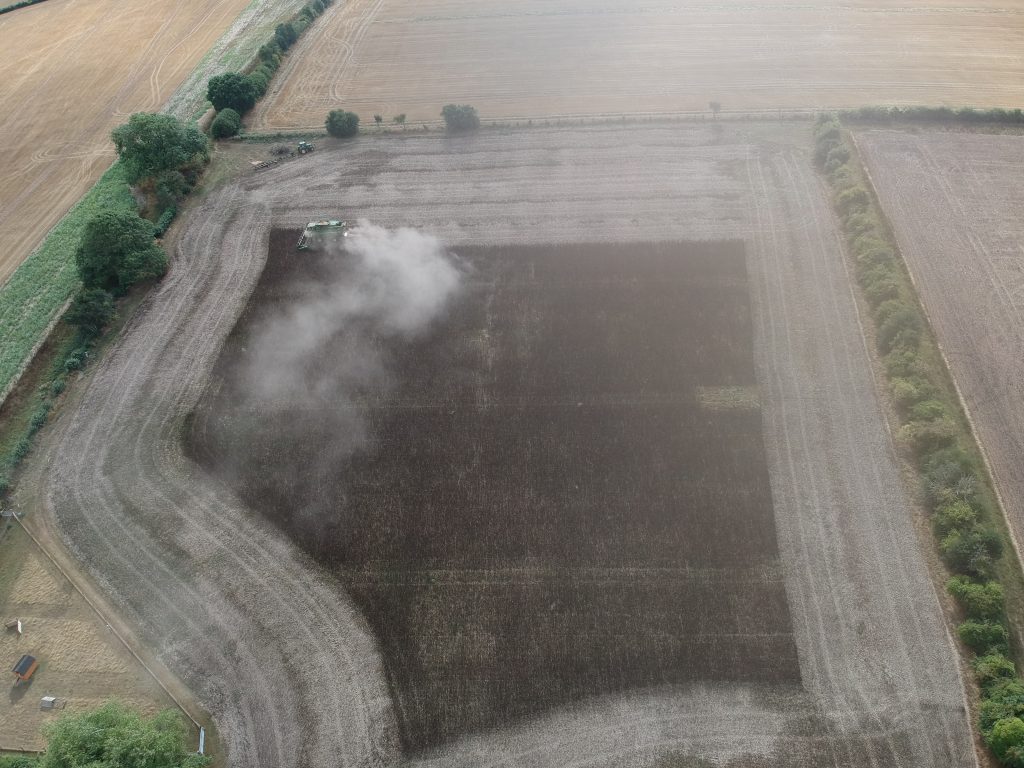

Great wasp spider pic… we had one making a web on the front of the John Deere….had no idea it’s habitat requirement was expensive green metal!
Thank you George for your praise and support of the fire service,the on call stations which cover all the rural areas we live and work in is not only possible because of the dedication of the crews but also the willingness of employers to release them from their main employment with no notice.
Blandford Station where I have served for 37 years have attended 55 incidents so far this month many of those calls being on farm.
One Saturday we were called out 8 times giving 9 hours duty and travelling 102 on the fire engine.
We are very grateful for the assistance given to us by the farming community.
Stay safe.
No you shouldn’t complain about all that rain, us Essex farmers dream of rain in the spring time – ecept when we get too much of course.
Dear George,
I just love the way you reach a point in your prose where it is crystal clear that you want to let fly about the subject…… and you studiously continue. No rant,no diatribe…..except I am left desperate to know what your thoughts are!
Great mix as ever,bravo.
Rogxxxxx